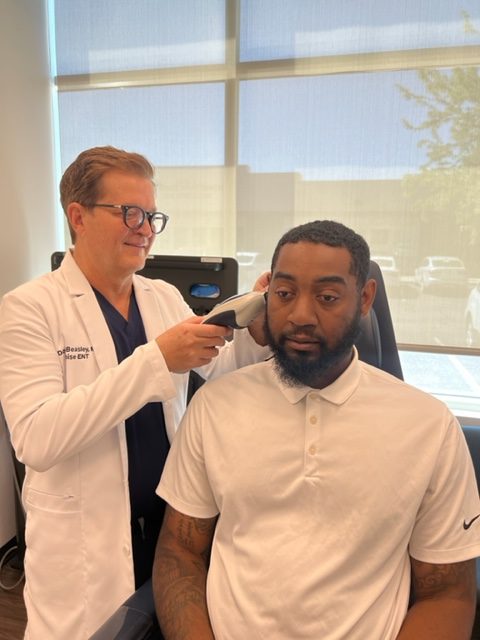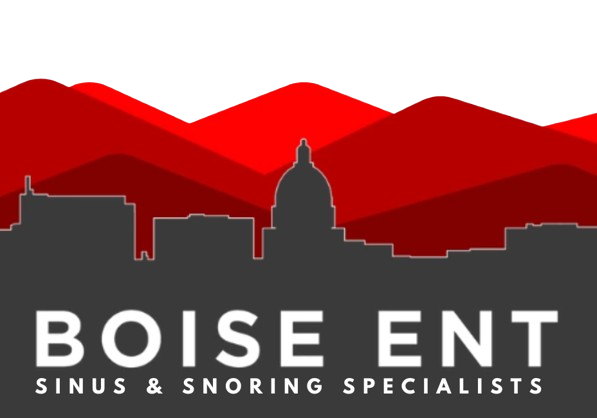Eustachian Tube Balloon Dilation Procedure
Below is a video animation showing how balloon eustachian tube dilation is performed. Also known as balloon eustachian tuboplasty, this is an alternative procedure to ear tubes to resolve clogged ears in adults suffering from eustachian tube dysfunction.
TLDR:
- Eustachian tube balloon dilation is a minimally invasive procedure for chronic Eustachian tube dysfunction.
- It involves inserting a balloon through the nasal passage to inflate and relieve blockages in the Eustachian tube.
- Benefits include effectiveness, customization for individual anatomy, and no need for manual pressure during inflation.
- Risks are usually mild and short-term, including pain, bleeding, and potential failure to alleviate symptoms.
- The procedure costs $3,500 to $5,000 but may be covered by insurance, including Medicare.
How Eustachian Tube Balloon Dilation Works
1. Insert the balloon into the nasal passage with the tip facing inferiorly and guide the tip to the opening of the Eustachian tube.
2. Advance the balloon catheter into the Eustachian tube and inflate the balloon for two minutes.
3. Fully Deflate the balloon catheter and remove the balloon from the Eustachian tube.
Read our brochure about Eustachian Tube Dilation Procedure

How Much Does Eustachian Tube Balloon Dilation Cost?
The cost for Eustachian tube balloon dilation surgery is roughly between $3500-$5000. For patients who suffer from chronic Eustachian Tube Dysfunction or ETD and where this procedure is considered medically necessary, most health insurance plans will cover the cost. This means that you would only be responsible for your deductible. The cost for Eustachian tube balloon dilation is also now covered by Medicare and even some Medicaid plans. It is always best to speak with your health insurance provider directly when considering medical procedures to make sure they are covered and that you understand all potential costs before proceeding.
Our Eustachian Tube Balloon Dilation Reviews
“As a professional diver my ears and sinuses mean the difference in continuing to work and enjoy life and giving up the lifestyle I enjoy.
The team helped identify a pain I was having that was making diving impossible. I had hit a point where I was no longer able to dive and had to cancel classes and refund dive students.
After procedures that included cleaning and clearing sinus cavities, fixing a deviated septum, and repairing eustachian tubes, I have returned to diving. Highly recommend for anyone who wants to continue diving!” – Rob
⭐⭐⭐⭐⭐
“Currently still going here for my left ear situation it is however feeling better then it has in months and had a eustachian tube dilation done. If you need pros here in Boise this place is the way to go.” – Mr. Collins
⭐⭐⭐⭐⭐
“I was thrilled to be referred to Dr. Beasley again recently after he did such a wonderful job repairing my deviated septum over 10 years ago. This time around he did a fantastic job for a sinus and Eustachian tube balloon procedure to help with sinus and ear pressure while flying. He is a very personable doctor with great “bedside manner” and really wants to help solve his patients’ problems. I wouldn’t hesitate to return to him again!” – Owen
⭐⭐⭐⭐⭐
FAQ’s for In-Office Eustachian Tube Balloon Dilation
Is this procedure covered by insurance?
Yes. Idaho has excellent coverage for this minimally invasive procedure. Your doctor will get prior-authorization from your insurance carrier to verify your benefits. In many cases, patients can have this procedure done for as low as an office visit copay.
Does Eustachian tube dilation it hurt?
In the studies conducted using the Entellus balloon, the average pain score for Eustachian tube dilation was 2.7. You will experience facial pressure and typically hear cracking sounds similar to an eggshell, which is normal. Should you experience pain during the procedure, your doctor can adjust your anesthesia medication to maximize your comfort for a positive experience.
Will I be put to sleep?
No, general anesthesia is not administered. Patients will usually be given oral, topical and local medication as part of anesthesia protocol. You will be awake, similar to a dental procedure.
Do I need a ride to/from the office?
Yes. In most cases your doctor will prescribe an anxiolytic, such as Lorazepam, and an anti-nausea Phenergan. These are taken 1 hour before the procedure, so we recommend that you arrange transportation to/from the office and that you do not operate a vehicle during this time.
Does the balloon stay in?
No, once the balloon is in place it is dilated for a few seconds then deflated and removed. The “doorways” to your sinuses will be permanently remodeled and reshaped.
What are the most common post-op side effects?
Some patients may experience headache, nasal congestion, minimal blood/mucus drainage, and facial pain. This temporary and in most cases will resolve the day after the procedure.
How long will I miss work/school?
In most cases, patients can return to work/school the next day if not the same day. Your doctor will advise you of your limitations, if any.
How long will the results last?
There is now sufficient data showing long term efficiency and indefinite results (beyond three years). Your outcome will typically depend on the severity of your sinus disease. There is very low revision rate for this procedure (less than 10%).
Is any tissue removed?
No, there is no tissue removal when dilating your sinuses. Your doctor will discuss possible removal of tissue with you only if you have structures in your nose that will make it difficult for him/her to perform the procedure.
How long will this procedure take?
Total start to finish time is typically around 1 hour. The anesthesia protocol takes longer than the procedure itself. Usually about 30-45 minutes. The actual balloon procedure takes about 10 minutes.
Will this cure my sinus disease?
No, unfortunately, there is no cure for sinus disease. For maximized results you should stay in compliance with any allergy immunotherapy, nasal steroids, etc that your doctor may have you on. This procedure will decrease your chances of a sinus infection and improve your quality of life by relieving associated symptoms, therefore making reducing infections, rounds of antibiotics and missed time from work.
